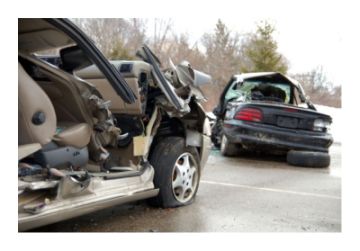
Michael Sivak and Brandon Schoettle of the University of Michigan Transportation Research Institute asked themselves about the most dangerous states for auto-related death — and decided to find an answer.
To do that, they looked at traffic fatality stats from the National Highway Traffic Safety Administration for calendar year 2013 (the most recent year available). Just to make things interesting, Sivak and Schoettle did a little fancy math to see how highway fatalities compared to deaths as a whole.
Their findings were eye-opening.
For example, you might expect that states with high levels of traffic congestion would see a greater percentage of the population killed in auto accidents. But in fact, the opposite seems true. In some of the most crowded areas of the U.S. — namely, the American northeast and along the Pacific coast — traffic fatality rates are low. The places where folks are least likely to die in auto accidents include:
- Washington, D.C., with an auto fatality rate of 3.1 deaths per 100,000 residents
- Massachusetts (4.9 deaths)
- & 4. New Jersey and New York (tied at 6.1 deaths)
- Rhode Island (6.2 deaths)
- Washington state (6.3 deaths)
- Alaska (6.9 deaths)
You could counter by saying that because the populations in some of those areas are so huge, the ratios are unfairly skewed — and in cases like New York and New Jersey, you might have a point. But that surely doesn’t explain the presence of Alaska and Rhode Island.
That argument also doesn’t explain why many of those same spots also earned high marks when Sivak and Schoettle compared roadway fatalities to deaths from other causes:
- Washington, D.C., where auto fatalities make up just 0.4 percent of deaths as a whole.
- Massachusetts (0.6 percent)
- Rhode Island (0.7 percent)
- & 5. New Jersey and New York (tied at 0.8 percent)
Other states with low proportions of auto fatalities compared to overall deaths included Connecticut, Hawaii, Illinois, Maine, Maryland, Michigan, Minnesota, Ohio, Oregon, Pennsylvania, Washington, and Wisconsin.
At the other end of Sivak and Schoettle’s scale, we find states in the Midwest and the South. Those with the highest fatality rates included:
- Montana, with 22.6 deaths per 100,000 people
- & 3. Mississippi and North Dakota (tied at 20.5 deaths)
To add insult to injury — literally — those same three states had some of the highest proportions of auto-related fatalities compared to deaths as a whole:
- & 2. Montana and North Dakota, where road deaths account for 2.4 percent of all fatalities
- Mississippi (2.0 percent)
The good news is, traffic fatalities have been on the decline for some time, and today, the number of roadway deaths pales in comparison to the throngs of people killed by heart disease, cancer, lung disease, stroke, and/or Alzheimer’s. Although 2015 may see something of a spike in auto-related fatalities, many analysts agree that the downward trend will continue over time. Once autonomous safety features and vehicle-to-vehicle communications become commonplace, rates will likely drop even further.




